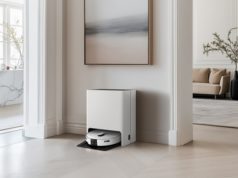Almost half of the respondents polled are using internet-connected devices, with boomers (46 percent) lagging behind millennials (56 percent).
Although still considered an emerging area, internet of things is steadily becoming more popular as a technology, according to a Vormetric survey of 1,000 U.S. consumers.
Almost half of the respondents polled are using internet-connected devices, with millennials (56 percent) outnumbering boomers (46 percent).
The most popular devices already in use are autos (24 percent), wearable fitness trackers (18 percent), home security cameras or similar devices (9 percent), thermostats (8 percent), lightbulbs (7 percent) and smartwatches (7 percent).
The survey revealed participants most fear the hacking of their cars (61 percent) and home security cameras (also 61 percent), while 52 percent said they thought a virtual personal assistant such as Amazon Echo would be vulnerable to hacking and 45 percent were concerned about the potential to hack smartwatches.
“What would go a long way toward helping consumers to feel confidence about these devices and the personal data they create is strong, simply worded information about how they protect their devices and the data that they produce,” Sol Cates, vice president of technical strategy at Vormetric, told eWEEK. “Ideally, this would be showcased in a prominent location on the physical device or accompanying materials, and on related web properties.”
As IoT devices now cross over into the physical world, Cates said IoT vendors should consider the same kinds of standards that have been in place had for years in aviation and car manufacturing—standards that detail explicitly how devices and data are secured and used.
“Transparency is also critical. As the use of IoT devices becomes increasingly common, we believe regulatory bodies and consumer protection groups will advocate more and more for transparency,” Cates said. “Although the concept of transparency may seem frightening to IoT manufacturers, the short pain is worth the long-term benefit. We believe the winners here are manufacturers that started thinking about this issue years ago, as they’ll be in a stronger compliance position.”
The report noted a smart thermostat or lightbulb, for instance, can tell when people are at home—thereby opening up the possibility of theft when absent.
A hacked medical monitoring device could become life-threatening, and any inadequately secured IoT device has the potential to compromise home computer systems through a home network connection.
“As with smartphone security, consumer awareness is generally low—at least until people are put in a situation where they have to think about it,” Cates said. “Once reminded, the overwhelming reaction is, ‘There’s really nothing I can do about it,’ and a tendency to just move on. Or we hear, ‘I’d rather not know.’ There certainly is a degree of inertia around the topic.”







